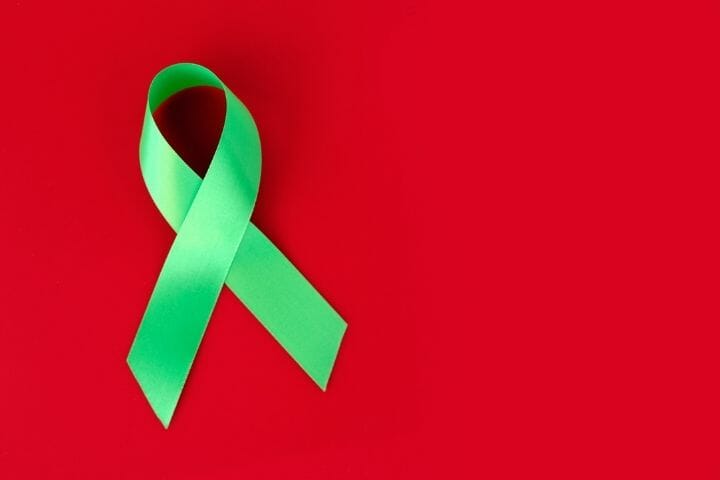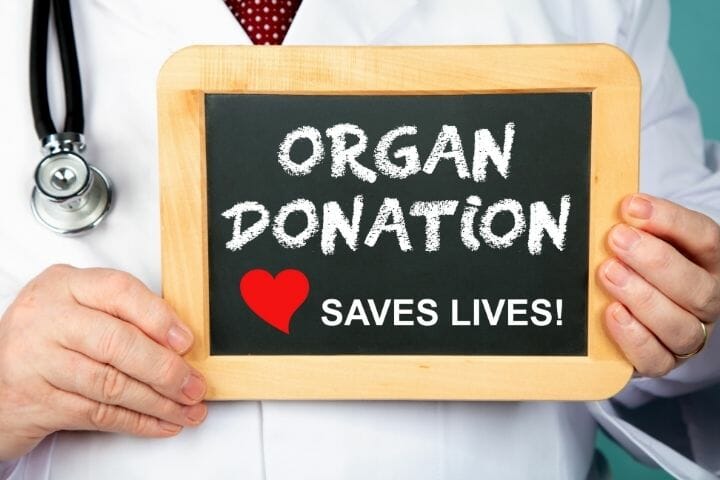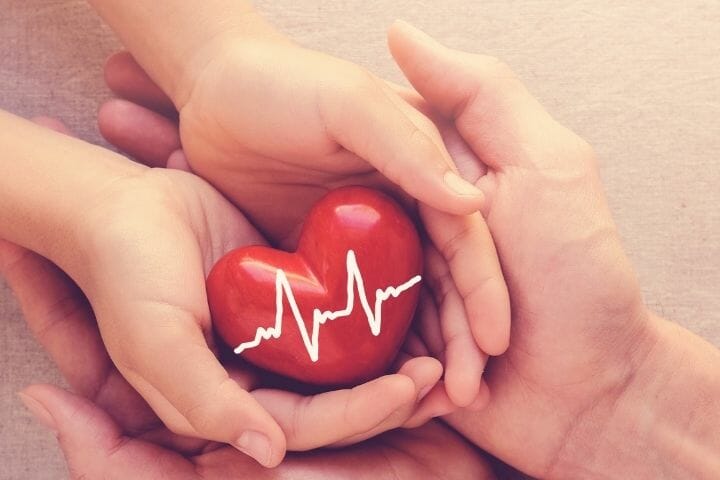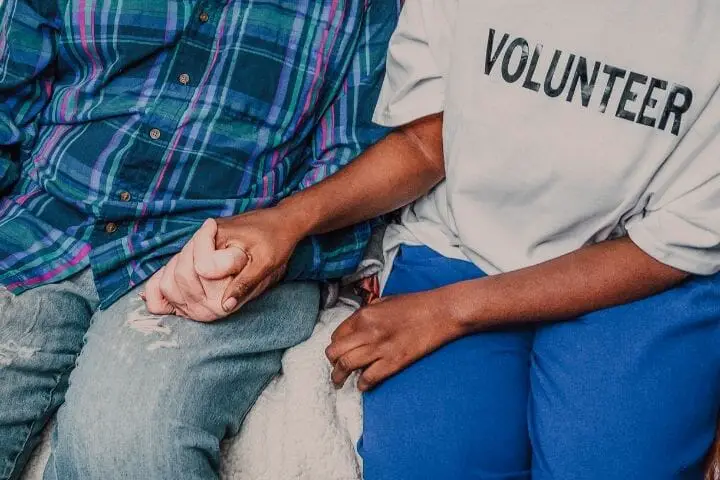There is no greater gift than the gift of life, and being an organ donor is one way to do it. This organ donation guide will help you along the way.
Contents
Do you know that more than 120,000 people in the United States wait for one or more organ donations daily? Most of us do not know about it because there is a lack of awareness about organ donation.

There is a massive requirement for organ donors, not just in the US but across the world – through this guide, we aim to reach as many people as we can and make them aware of how donating an organ can save not just one but many lives – it is indeed the ultimate gift that you can give someone. So, let’s go!
What Exactly Is Organ Donation?
The term is self-explanatory – it is the process or activity where one person voluntarily gives away their organ(s) to be transplanted in the body of another person, usually to save their life. It is a legal process, and the organ is removed with the consent of the owner of the body.
Some of the standard organ donations are used in the surgery of kidneys, heart, liver, corneas, pancreas, intestines, bone marrow, skin, lungs, etc. In some cases, one donates the tissues of specific organs, which can be life-saving for the receiver.
It is, however, not necessary that the donation is made for transplantation. Many people donate their organs for research purposes as well. Many donations are allowed by people who are still alive, but most offerings result from a person who has died already but allowed the process before their death.
History of organ donation
The first-ever process of successful organ transplant took place in 1954. The donor was Ronald Lee Herrick, who donated his kidney to his identical twin brother. Joseph Murray, the lead surgeon in the transplant, received a Nobel Prize in Medicine, in 1990, for this achievement.
The oldest known organ donor was a 95-year-old man who lived in West Virginia and donated his liver before dying. The youngest organ donor was a baby born in 2014 with anencephaly and lived for only 100 minutes. However, his kidneys were donated to a person suffering from renal failure.

What is the highest donor rate in the world?
As per reports, Spain has the highest number of donors globally. The donor rate in the country, according to a 2019 report, was 46.91 per million people. We followed it with 36.88 per million people, Croatia with 34.68 per million people, Portugal with 33.8 million people, and finally, France with 33.25 per million people.
In the US, Colorado has the best donor designation (DDR). Nearly 69% are registered as organ donors.
Even though the US is one of the highest organ donors globally, there is still a large gap to fill between the donors and the receivers since more than 120,000 people await life-saving organ transplants in the country.
The Process of Organ Donation
In the beginning, it was pretty challenging to design the process of organ donation. However, with the establishment of the National Organ Transplant Act of 1984 (NOTA), the complexity of the process was simplified, and it became pretty easy to understand the process.
NOTA further established Organ Procurement and Transplant Network (OPTN) and United Network for Organ Sharing (UNOS) to expand the process to make it easy to understand and fair and transparent in the steps that are followed.
Below is the step-by-step process of organ donation in the US-
Identification of the donor
The physicians or doctors first determine whether a person is a potential donor or is already brain-dead. It all depends on the nature of injury or surgery that the donor goes through.
Evaluating the donor’s eligibility
The coordinator assigned to the donor evaluates the patient’s medical history via a physical examination before moving on to the next step. This evaluation is the basis of determining whether the donor is eligible for donation.

Authorization or consent for organ recovery
If the person is eligible for organ donation, then the legal next-of-kin is approached for consent or authorization for contribution. If the person cannot be authorized, then the donor’s family shall be contacted for the donation. A consent form is then signed by the next-of-kin or the person authorized by the family.
Matching the organs for the recipient
The UNOS computer the organ donated with the potential recipient based on blood type, body size, medical urgency, and waiting list. Various other factors are needed to match the donor’s organ with the recipient in question that the medical professionals and organ coordinators better understand.
Listing of organ
Usually, the organ is listed for the recipient in the regional area of the organization offering the same. If no suitable user is found in the service area, then the same is being provided nationally, if necessary. However, the process may vary depending on the organization.
Connecting with the surgeon
Suppose there is a patient who wants to use the organ. In that case, the coordinator connects with the surgeon of the potential recipient and discusses the same with him if the surgeon declines the organs (if it doesn’t deem fit for his patient, the surgeon of the next patient on the waiting list is contacted, and so on.
Recovery of the organ(s)
Once the recipient of the organ is found and matched, the surgical team arrives in the hospital to recover the organs from the donor.
Transplantation process
The recipient, once identified, is called for the preparation of the transplantation process. Once the organ arrives at the recipient’s hospital, the surgery begins.

How To Become a Donor
About 95 percent of Americans believe in organ donation, yet, only 52 percent of them have registered to donate organs after their death. One of the main reasons for the same is that most of us have no education or awareness about being a donor. This section will thus, help you with the same.
The first step to becoming an organ donor is to make sure that you have registered while you are in good health. While you express your wish to donate your organs for the good of others, others might also seek inspiration from you and register for the same while they are in good health. Here are some steps to follow to sensitize the world about organ donation while you become a donor –
- Register as an organ donor
- Sign a donor card and carry it with you everywhere
- Add your donor status to your driving license to inspire others
- Mention organ donation in your advance directives that are living will, etc.
- Tell your family about your donor status so that they remember the same in case situation arises
- Tell your physician about your decision as well
- Educate and sensitize others about the same
The impact of organ donation – interesting statistics
Organ donation is the ultimate gift, without a doubt. Whether you are a living donor or a family member of a donor who has passed away already, understand that you have given an incredible gift to someone who would be otherwise suffering or, worse, dead in the current reality. If it weren’t for you, they wouldn’t be living a good life with their loved ones.
Below are some massively impressing organ donation statistics to restore one’s faith in humanity.
- One organ donor can save the lives of about eight people at once.
- An average of 79 people receive organ transplants daily.
- A new potential recipient is added to the waiting list for organs every 10 minutes.
- 1 out of 3 deceased organ donors is above the age of 50.
- More than 655,000 transplants have taken place since 1984.
- Corneal transplant is the most common transplant in the US. More than 40,000 corneal transplants take place in the country every year.
- More than 6,000 transplants are from living donors every year.

Top organs needed in the US for donation
As per the United Network for Organ Sharing, below is the list of organs that are most needed for donation in the US-
- Kidney (more than 99,000 cases)
- Lived ( around 15,000 points)
- Pancreas (about 1000 cases)
- Heart (more than 4,000)
- Lungs (more than 1500)
What are the advantages of organ donation?
The biggest blessing and, thus, an advantage of donating an organ or more is the ability to save a human life. Apart from it, you might not need another reason or motivation to donate an organ.
Your family shall find comfort in that you gifted the blessing called life to someone who needed it. Even if you have presented an organ for research purposes, it is an enormous contribution that can successfully save the lives of countless human beings suffering from the same disorder as yours. Also, your donation doesn’t keep one but eight lives at a time – think about the power you hold!

Wrap Up
No one wants to talk about their passing even though this will happen at some point in the future. Tragedy may strike at any moment, and thus, we must live a selfless life with the least or zero regrets.
So, striving to be that person who makes people happy and provides them comfort, even after they are gone and becoming an organ donor, is one way to do it.
We hope this guide was helpful in giving you information about organ donation, why you should consider doing it, and why it is sorely needed. If you have further questions, feel free to drop us a note and we will get back to you quickly.
